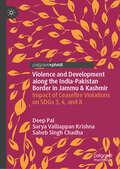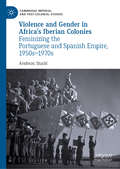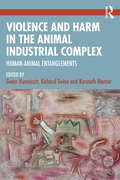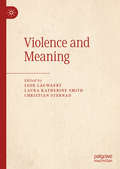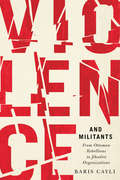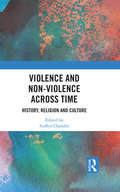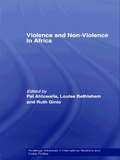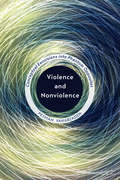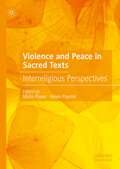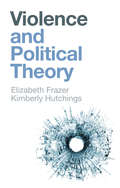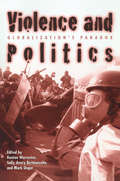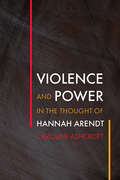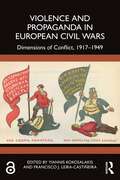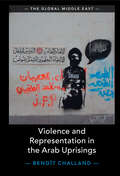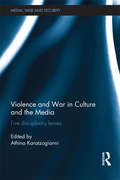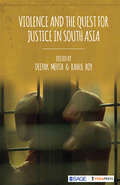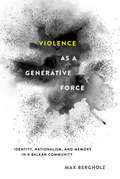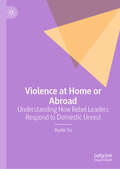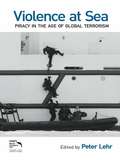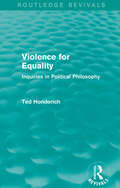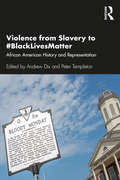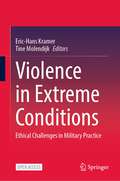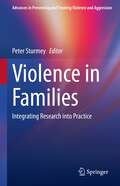- Table View
- List View
Violence and Development along the India-Pakistan Border in Jammu & Kashmir: Impact of Ceasefire Violations on SDGs 3, 4, and 8
by Deep Pal Surya Valliappan Krishna Saheb Singh ChadhaThis book examines the impact of cross-border violence on communities living along the Line of Control and the International Border in Jammu and Kashmir, India. Using Sustainable Development Goals 3, 4, and 8 as metrics, it examines the first and second-order effects of ceasefire violations, efforts by state and private actors, and the role of coincident factors such as geography, terrain, and the socio-political environment. It uses diverse sources including newspapers, civil society reports, government records, surveys, stakeholder interviews, and field visits. The study finds that cross-border violence affects everyday life through confinement, displacement, and migration. Beyond death or injury, violence along the border impacts mental health, damages infrastructure, and reduces access to educational and financial facilities. It also discourages skilled human resources and private investment in these areas. The violence and the responses to it deter normal life and activity and, over time, leave a permanent impact on the socio-economic fabric of the region.
Violence and Gender in Africa's Iberian Colonies: Feminizing the Portuguese and Spanish Empire, 1950s–1970s (Cambridge Imperial and Post-Colonial Studies Series)
by Andreas StuckiThis book examines how and why Portugal and Spain increasingly engaged with women in their African colonies in the crucial period from the 1950s to the 1970s. It explores the rhetoric of benevolent Iberian colonialism, gendered Westernization, and development for African women as well as actual imperial practices – from forced resettlement to sexual exploitation to promoting domestic skills. Focusing on Angola, Mozambique, Western Sahara, and Equatorial Guinea, the author mines newly available and neglected documents, including sources from Portuguese and Spanish women’s organizations overseas. They offer insights into how African women perceived and responded to their assigned roles within an elite that was meant to preserve the empires and stabilize Afro-Iberian ties. The book also retraces parallels and differences between imperial strategies regarding women and the notions of African anticolonial movements about what women should contribute to the struggle for independence and the creation of new nation-states.
Violence and Harm in the Animal Industrial Complex: Human-Animal Entanglements
by Richard Twine Gwen Hunnicutt Kenneth MentorThis book grapples with multispecies violent exploitations embedded in corridors of power within the animal-industrial complex (A-IC). The A-IC is a useful framework for understanding how exploitative human-animal relations are central to capitalist relations and profit accumulation. ‘A-IC-related-violence’ – killing animals for economic gain – has a ripple effect which results in profound consequences for humans as well.This collection of international scholarship explores topics as varied as how A-IC-related-violence is reproduced and sustained through rapidly changing discursive strategies, ideological architecture, and particular cultural forms that elide and legitimize animal cruelty. Several chapters expose collusion between governments, corporations, and academia as central to maintaining dominance of A-IC-related-violence. Other scholars explore the trouble with making the conditions of “meat” production visible – of de-fetishizing meat commodities. The scholarship critically explores dynamic components of an apparatus that enables A-IC-related-violence and harm but is situated within the capitalist order and charts A-IC-related-violence as the key profit-generating practice in select domains of the A-IC.The book unmasks inherent cruelties in a proliferation of social forms that ultimately reflect a socioeconomic system that centralizes capitalist life characterized by endless growth, competitiveness, and profligate consumption. This is essential reading for those engaged in critical criminology, green criminology, violence studies, peace and conflict studies, critical animal studies, or animal rights-oriented scholars.
Violence and Meaning
by Lode Lauwaert Laura Katherine Smith Christian SternadThis edited collection explores the problem of violence from the vantage point of meaning. Taking up the ambiguity of the word ‘meaning’, the chapters analyse the manner in which violence affects and in some cases constitutes the meaningful structure of our lifeworld, on individual, social, religious and conceptual levels. The relationship between violence and meaning is multifaceted, and is thus investigated from a variety of different perspectives within the continental tradition of philosophy, including phenomenology, post-structuralism, critical theory and psychoanalysis. Divided into four parts, the volume explores diverging meanings of the concept of violence, as well as transcendent or religious violence- a form of violence that takes place between humanity and the divine world. Going on to investigate instances of immanent and secular violence, which occur at the level of the group, community or society, the book concludes with an exploration of violence and meaning on the individual level: violence at the level of the self, or between particular persons. With its focus on the manifold of relations between violence and meaning, as well as its four part focus on conceptual, transcendent, immanent and individual violence, the book is both multi-directional and multi-layered.
Violence and Militants: From Ottoman Rebellions to Jihadist Organizations (Human Dimensions in Foreign Policy, Military Studies, and Security Studies #6)
by Baris CayliHow do militants rationalize violence and what are their motives? How do time and space shape their destiny? In Violence and Militants Baris Cayli explores these enduring questions by comparing violent episodes in towns and villages in the nineteenth-century Ottoman Balkans with today's zones of conflict from Afghanistan to the Middle East. Placing history alongside the troubles of the present, Violence and Militants reveals parallels between Christian militants who rebelled against the Ottoman Empire and four jihadist organizations of today: Hezbollah, Hamas, al-Qaeda, and Isis. Drawing on scholarship by political theorists, historians, sociologists, anthropologists, and philosophers, Cayli traces the root of dissent to a perceived deprivation that leads to aggressive protest and action. He argues that the rationalization of violence functions independently of time and geographical location. Through a riveting narrative, this book uncovers how militant groups use revenge, ideals, and confrontation to generate fear and terror in the name of justice. Breaking new ground, Violence and Militants is the first book to address this complex relationship across different periods of history.
Violence and Non-Violence across Time: History, Religion and Culture
by Sudhir ChandraThis book probes the complex interweaving, across time and cultures, of violence and non-violence from the perspective of the present. One of the first of its kind, it offers a comprehensive examination of the interpenetration of violence and non-violence as much in human nature as in human institutions with reference to different continents, cultures and religions over centuries. It points to the present paradox that even as violence of unprecedented lethality threatens the very survival of humankind, non-violence increasingly appears as an unlikely feasible alternative. The essays presented here cover a wide cultural–temporal spectrum — from Vedic sacrifice, early Jewish–Christian polemics, the Crusades, and medieval Japan to contemporary times. They explore aspects of the violence–non-violence dialectic in a coherent frame of analysis across themes such as war, jihad, death, salvation, religious and philosophical traditions including Buddhism, Christianity, Judaism, Hinduism, Islam, mysticism, monism, and Neoplatonism, texts such as Ramayana, Mahabharata and Quran, as well as issues faced by Dalits and ethical imperatives for clinical trials, among others. Offering thematic width and analytical depth to the treatment of the subject, the contributors bring their disciplinary expertise and cultural insights, ranging from the historical to sociological, theological, philosophical and metaphysical, as well as their sensitive erudition to deepening an understanding of a grave issue. The book will be useful to scholars and researchers of history, peace and conflict studies, political science, political thought and cultural studies, as well as those working on issues of violence and non-violence.
Violence and Non-Violence in Africa (Routledge Advances in International Relations and Global Politics #Vol. 54)
by Ruth Ginio Pal Ahluwalia Louise BethlehemThis unique volume seeks both to historicize and to deconstruct the pervasive, almost ritualistic, association of Africa with forms of terrorism as well as extreme violence, the latter bordering on and including genocide. Africa is tendentiously associated with violence in the popular and academic imagination alike. Written by leading authorities in postcolonial studies and African history, as well as highly promising emergent scholars, this book highlights political, social and cultural processes in Africa which incite violence or which facilitate its negotiation or negation through non-violent social practice. The chapters cover diverse historical periods ranging from fourteenth century Ethiopia and early twentieth century Cameroon, to contemporary analyses set in Kenya, Tanzania, Nigeria, Cameroon, the Ivory Coast and South Africa. It makes a crucial contribution to a revitalized understanding of the social and historical coordinates of violence - or its absence - in African settings. Violence and Non-Violence in Africa will be of interest to students and scholars of African history and anthropology, colonialism and post-colonialism, political science and Africanist cultural studies.
Violence and Nonviolence: Conceptual Excursions into Phantom Opposites
by Peyman VahabzadehThrough an original and close reading of the key literature regarding both revolutionary violence and nonviolence, this book collapses the widely-assumed concepts of violence and nonviolence as mutually exclusive. By revealing that violence and nonviolence are braided concepts arising from human action, Peyman Vahabzadeh submits that in many cases the actions deemed to be either violent or nonviolent might actually produce outcomes that are not essentially different. Vahabzadeh offers a conceptual phenomenology of the key thinkers and theorists of both revolutionary violence and various approaches to nonviolence. Arguing that violence is inseparable from civilizations, Violence and Nonviolence concludes by making a number of original conceptualizations regarding the relationship between violence and nonviolence, exploring the possibility of a nonviolent future and proposing to understand the relationship between the two concepts as concentric, not opposites.
Violence and Peace in Sacred Texts: Interreligious Perspectives
by Helen Paynter Maria PowerThis volume brings together 11 experts from a range of religious backgrounds, to consider how each tradition has interpreted matters of violence and peace in relation to its sacred text. The traditions covered are Hinduism, Buddhism, Judaism, Christianity, Islam and Sikhism. The role of religion in conflict, war, and the creation of peaceful settlements has attracted much academic attention, including considerations of the interpretation of violence in sacred texts. This collection breaks new ground by bringing multiple faiths into conversation with one another with specific regard to the handling of violence and peace in sacred texts. This combination of close attention to text and expansive scope of religious inclusion is the first of its kind.
Violence and Political Theory (And Political Theory)
by Kimberly Hutchings Elizabeth FrazerIs politics necessarily violent? Does the justifiability of violence depend on whether it is perpetrated to defend or upend the existing order – or perhaps on the way in which it is conducted? Is violence simply direct physical harm, or can it also be structural, symbolic, or epistemic? In this book, Elizabeth Frazer and Kimberley Hutchings explore how political theorists, from Niccolo Machiavelli to Elaine Scarry, have addressed these issues. They engage with both defenders and critics of violence in politics, analysing their diverse justificatory and rhetorical strategies in order to draw out the enduring themes of these debates. They show how political theorists have tended to evade the central difficulties raised by violence by either reducing it to a neutral tool or identifying it with something quite distinct, such as justice or virtue. They argue that, because violence is necessarily wrapped up with hierarchical and exclusive structures and imaginaries, legitimising it in terms of the ends that it serves, or how it is perpetrated, no longer makes sense. This book will be an invaluable resource for students and scholars in areas ranging from the ethics of terror and war to radical and revolutionary political thought.
Violence and Politics: Globalization's Paradox (New Political Science Reader)
by Mark Ungar Kenton Worcester Sally Avery BermanzohnFirst Published in 2002. Routledge is an imprint of Taylor & Francis, an informa company.
Violence and Power in the Thought of Hannah Arendt (Intellectual History of the Modern Age)
by Caroline AshcroftHannah Arendt was one of the foremost political theorists of the twentieth century to wrestle with the role of violence in public life. Yet remarkably, despite the fact that it was perhaps the most pressing issue of her era, this theme in her work has rarely been explored. In Violence and Power in the Thought of Hannah Arendt, Caroline Ashcroft deepens our understanding of Arendt's conception of the role of violence, offering a critical reading of her work and using it as a provocation to think about how we might engage with contemporary ideas.Arendt has generally been thought to exclude acts of violence from "the political," based on her supposed idealization of ancient democratic politics. Ashcroft argues that Arendt has been widely misunderstood by both critics and advocates on this. By examining Arendt's thought on violence in key examples of political practice such as modern Jewish politics, the politics of Greece and Rome, and the French and American revolutions, Ashcroft reveals a more pragmatic notion of the place of violence in the political. She argues that what Arendt opposes in political violence is the use of force to determine politics, an idea central to modern sovereignty. What Arendt criticizes is not violence as such, but the misuse of violence and misunderstandings of politics which exclude participatory power altogether.This work also engages with a wider set of concerns in political theory by obliging us to rethink the relations between violence and politics. Arendt's work offers a way to bridge the gulf between sovereign or realist politics and nonhierarchical, nonviolent participatory politics, and thus offers valuable resources for contemporary political theory.
Violence and Propaganda in European Civil Wars: Dimensions of Conflict, 1917–1949
by Yiannis Kokosalakis Leira-Castiñeira, Francisco J.This volume offers a broad overview of the conditions, motives, and practices of violence during the most prominent intra‑state conflicts in Europe during the first half of the 20th century.This book seeks to move beyond accounts of civil war violence that focus on microlevel motives or grand cleavages, arguing instead that violence is best examined as a multidimensional phenomenon involving a range of structural, personal, and conjectural factors operating at various levels of societal interaction. Making a case for methodological pluralism, the volume brings together an interdisciplinary team of historians and social scientists to address the aspects of civil war violence from a broad range of empirical and methodological perspectives. The book consists of three thematic sections. The first section covers contextual issues related to civil war violence, including the role of ideology and social dynamics. The second and third sections comprise empirical case studies that examine the dimensions of violence in six prominent European civil wars. The volume focuses on these particular conflicts because they are almost universally recognized as instances of civil war, and this enables the volume to maintain its analytical focus on the dynamics of violence.This book will be of much interest to students of European history, civil wars, political violence, and International Relations in general.Chapter 8 of this book is freely available as a downloadable Open Access PDF at http://www.taylorfrancis.com under a Creative Commons Attribution-Non Commercial-No Derivatives (CC-BY-NC-ND) 4.0 license.
Violence and Representation in the Arab Uprisings (The Global Middle East #21)
by Benoît ChallandProviding a longue durée perspective on the Arab uprisings of 2011, Benoît Challand narrates the transformation of citizenship in the Arab Middle East, from a condition of latent citizenship in the colonial and post-independence era to the revolutionary dynamics that stimulated democratic participation. Considering the parallel histories of citizenship in Yemen and Tunisia, Challand develops innovative theories of violence and representation that view cultural representations as calls for a decentralized political order and democratic accountability over the security forces. He argues that a new collective imaginary emerged in 2011 when the people represented itself as the only legitimate power able to decide when violence ought to be used to protect all citizens from corrupt power. Shedding light upon uprisings in Yemen and Tunisia, but also elsewhere in the Middle East, this book offers deeper insights into conceptions of violence, representation, and democracy.
Violence and Social Orders
by Douglass C. North John Joseph Wallis Barry R. Weingast DOUGLASS C. NORTH JOHN JOSEPH WALLISAll societies must deal with the possibility of violence, and they do so in different ways. This book integrates the problem of violence into a larger social science and historical framework, showing how economic and political behavior are closely linked. Most societies, which we call natural states, limit violence by political manipulation of the economy to create privileged interests. These privileges limit the use of violence by powerful individuals, but doing so hinders both economic and political development. In contrast, modern societies create open access to economic and political organizations, fostering political and economic competition. The book provides a framework for understanding the two types of social orders, why open access societies are both politically and economically more developed, and how some 25 countries have made the transition between the two types.
Violence and War in Culture and the Media: Five Disciplinary Lenses (Media, War and Security)
by Athina KaratzogianniThis edited volume examines theoretical and empirical issues relating to violence and war and its implications for media, culture and society. Over the last two decades there has been a proliferation of books, films and art on the subject of violence and war. However, this is the first volume that offers a varied analysis which has wider implications for several disciplines, thus providing the reader with a text that is both multi-faceted and accessible. This book introduces the current debates surrounding this topic through five particular lenses: the historical involves an examination of historical patterns of the communication of violence and war through a variety sources the cultural utilises the cultural studies perspective to engage with issues of violence, visibility and spectatorship the sociological focuses on how terrorism, violence and war are remembered and negotiated in the public sphere the political offers an exploration into the politics of assigning blame for war, the influence of psychology on media actors, and new media political communication issues in relation to the state and the media the gender-studies perspective provides an analysis of violence and war from a gender studies viewpoint. Violence and War in Culture and the Media will be of much interest to students of war and conflict studies, media and communications studies, sociology, security studies and political science.
Violence and the Quest for Justice in South Asia
by Deepak Mehta Rahul RoyA first of its kind, this timely volume provides a series of case studies from South Asia that detail the quest for justice, the links that can be drawn from different countries in the region and the points of contact and divergences in the enunciation and practice of law. A second theme that runs through the book discusses the corrosive and affective power of violence in its ability to forge new solidary groups and communities. This is the first serious attempt by activists and scholars to think of South Asia as a region bound together through war and collective violence. It will be an invaluable read for postgraduate students and scholars of law and society, political philosophy, sociology and anthropology of violence, history and memory as well as political activists and government departments.
Violence and the State in Languedoc, 1250-1400
by Justine Firnhaber-BakerAlthough it is often assumed that resurgent royal government eliminated so-called 'private warfare', the French judicial archives reveal nearly one hundred such wars waged in Languedoc and the Auvergne between the mid-thirteenth and the end of the fourteenth century. Royal administrators often intervened in these wars, but not always in order to suppress 'private violence' in favour of 'public justice'. They frequently recognised elites' own power and legitimate prerogatives, and elites were often fully complicit with royal intervention. Much of the engagement between royal officers and local elites came through informal processes of negotiation and settlement, rather than through the imposition of official justice. The expansion of royal authority was due as much to local cooperation as to conflict, a fact that ensured its survival during the fourteenth-century crises. This book thus provides a new narrative of the rise of the French state and a fresh perspective on aristocratic violence.
Violence as a Generative Force: Identity, Nationalism, and Memory in a Balkan Community
by Max BergholzDuring two terrifying days and nights in early September 1941, the lives of nearly two thousand men, women, and children were taken savagely by their neighbors in Kulen Vakuf, a small rural community straddling today’s border between northwest Bosnia and Croatia. This frenzy—in which victims were butchered with farm tools, drowned in rivers, and thrown into deep vertical caves—was the culmination of a chain of local massacres that began earlier in the summer. In Violence as a Generative Force, Max Bergholz tells the story of the sudden and perplexing descent of this once peaceful multiethnic community into extreme violence. This deeply researched microhistory provides provocative insights to questions of global significance: What causes intercommunal violence? How does such violence between neighbors affect their identities and relations? Contrary to a widely held view that sees nationalism leading to violence, Bergholz reveals how the upheavals wrought by local killing actually created dramatically new perceptions of ethnicity—of oneself, supposed "brothers," and those perceived as "others." As a consequence, the violence forged new communities, new forms and configurations of power, and new practices of nationalism. The history of this community was marked by an unexpected explosion of locally executed violence by the few, which functioned as a generative force in transforming the identities, relations, and lives of the many. The story of this largely unknown Balkan community in 1941 provides a powerful means through which to rethink fundamental assumptions about the interrelationships among ethnicity, nationalism, and violence, both during World War II and more broadly throughout the world.
Violence at Home or Abroad: Understanding How Rebel Leaders Respond to Domestic Unrest
by Ruolin SuFrom the civil wars in Colombia, Nepal, and Syria, to the revolutions in Ukraine and Kyrgyzstan, and the fervent uprisings of the Arab Spring, recent decades have vividly demonstrated that rebellion is in the air. In this groundbreaking study, Ruolin Su delves into the intricate dynamics of violent policy choices made by rebel leaders amid domestic turmoil. How does a history of rebellion shape a leader's inclination towards violence when they ascend to power? When do these leaders turn to violence abroad, and to what extent does it bolster their hold on power at home? This book is an indispensable resource for political scientists and scholars dedicated to understanding the complexities of post-rebellion states and international security.
Violence at Sea: Piracy in the Age of Global Terrorism
by Peter LehrViolence at Sea is an overview of maritime piracy, examining threats that piracy poses to global security and commerce, as well as measures and policies to mitigate the threat. The essays analyze piracy activities in key shipping lanes (including the African coast, the Arabian Sea, the Bay of Bengal, and the Straits of Malacca-South China Sea); piratical groups and their capabilities; case studies on overlaps between piracy, terrorism, and organized crime; legal and policy hurdles to combating piracy; tactical recommendations for combating piracy; and new trends and developments in the area. The counter response to maritime terrorism has been slow in coming, hampered by issues rooted in sovereignty, the laws of the sea, and the inherent challenges of international coordination. Yet given the likelihood that threats posed by piracy will not recede, but rather increase, all actors affected by maritime security will, sooner or later, need to address these challenges.
Violence for Equality: Inquiries in Political Philosophy (Routledge Revivals)
by Ted HonderichViolence for Equality, first published in 1989, questions the morality of political violence and challenges the presuppositions, inconsistencies and prejudices of liberal-democratic thinking. This book should be of interest to teachers and students of philosophy and politics.
Violence from Slavery to #BlackLivesMatter: African American History and Representation
by Andrew Dix Peter TempletonViolence from Slavery to #BlackLivesMatter brings together perspectives on violence and its representation in African American history from slavery to the present moment. Contributors explore how violence, signifying both an instrument of the white majority’s power and a modality of black resistance, has been understood and articulated in primary materials that range from slave narrative through "lynching plays" and Richard Wright’s fiction to contemporary activist poetry, and from photography of African American suffering through Blaxploitation cinema and Spike Lee’s films to rap lyrics and performances. Diverse both in their period coverage and their choice of medium for discussion, the 11 essays are unified by a shared concern to unpack violence’s multiple meanings for black America. Underlying the collection, too, is not only the desire to memorialize past moments of black American suffering and resistance, but, in politically timely fashion, to explore their connections to our current conjuncture.
Violence in Extreme Conditions: Ethical Challenges in Military Practice
by Eric-Hans Kramer Tine MolendijkAs an organization operating under extreme conditions, the military is often confronted with destructive behavior from individuals, organizations, and societies. Written by experts from a variety of disciplines, this open access book reflects on confrontations with violence under extreme conditions and the various challenges that arise.By examining real first-hand accounts of soldiers’ deployments, the contributions shed new light on the multifaceted and sometimes hidden dynamics of destructive violent behavior and offer an ethical reflection on military practices. In addition, they address topics such as moral decision-making in violent contexts, military trauma, organizational change, and military ethics education.The interdisciplinary exploration of these topics has been the primary focus of Désirée Verweij, who was the Chair of Military Ethics at the Netherlands Defence Academy from 2008 to 2021. The contributions in this book are written in honor of her scholarly achievements and help to ensure that these important issues continue to receive attention. The book will appeal to scholars of military studies, organizational studies and military ethics, and to professionals and decisionmakers in military organizations.
Violence in Families: Integrating Research into Practice (Advances in Preventing and Treating Violence and Aggression)
by Peter SturmeyThis book examines the nature, prevention, and treatment of violence within families. It reviews the definition of contemporary families, emphasizing various structures, including nuclear families, reconstituted families, gay and lesbian families, and recent immigrant families. In addition, the volume describes the nature of and risk factors for family violence from the perspectives of both victims (e.g., infants, children, seniors) and perpetrators (e.g., adolescent family members, women). It identifies the implications and explores strategies for prevention, treatment, and services. In addition, the volume directly addresses practice and evidence-based interventions for individual perpetrators, family interventions, interventions for victims and systemwide interventions (e.g., those involving the courts, police, and national policy). Chapters review the best available quality evidence from randomized controlled trials, systematic reviews, meta-analyses, research syntheses, and evidence-based recommendations from expert panels and government agencies. Case studies illustrate the application of evidence-based practice to violence within the family to demonstrate the effectiveness of the intervention. Topics featured in this book include:Definition and conceptualization of family.Definition and measurement of as well as risk factors for family violence.Family violence in various traditional and nontraditional families.Prevention strategies as well as Individual and family treatments for perpetrators and victims of family violence.Social policy and legal interventions for family violence. Violence in Families is a must-have resource for researchers, professors, and graduate students as well as clinicians, therapists, and other professionals in developmental psychology, family studies, forensic psychology, criminology/criminal justice, public health, psychotherapy/counseling, psychiatry, social work, educational policy and politics, health psychology, nursing, and behavioral therapy/rehabilitation.
